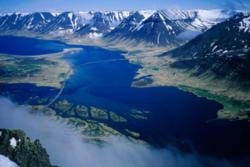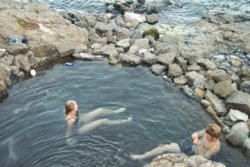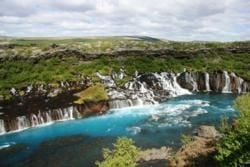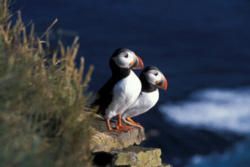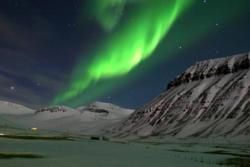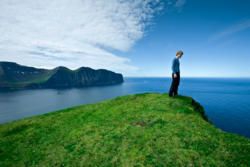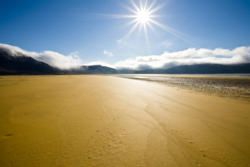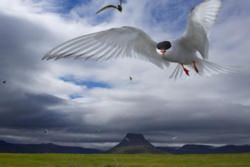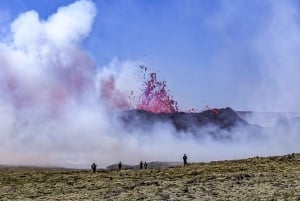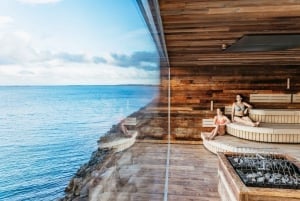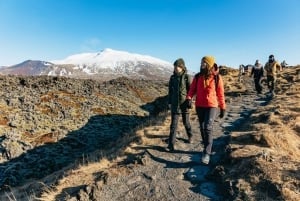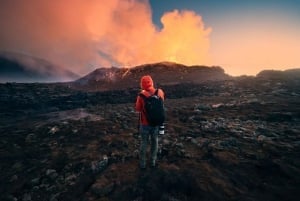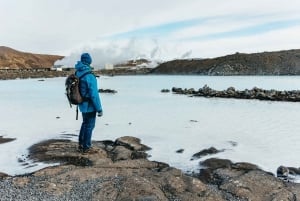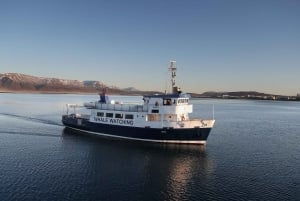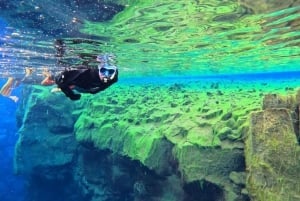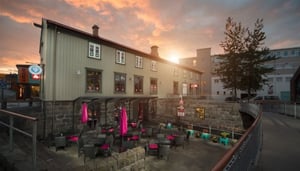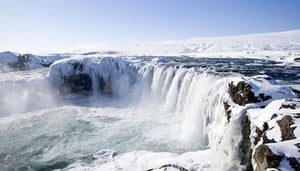Westfjords
In the North-West of the country, the Westfjords (Vestfirðir) is a huge peninsula that comprises 1/5th of the surface of Iceland. It is also one of the least populated parts of the country, with less than 3% of its total inhabitants. It has some of the roughest, most impassable terrains in Iceland, though with the high quality infrastructure of Iceland, getting around is never much of an issue. The area is mountainous all over, and the coastline is riddled with fjords and inlets of all sizes, so the sheer-rock faces of mountains dropping off to the sea are a common sight. The main community in the area is Ísafjörður, though the whole area is littered with small mountain towns and fishing villages, some of them unapproachable except by flight or boat.
Even though the inhabitants of the Westfjords are known for their hospitality and kindness, the main attraction is probably the nature. Unspoiled, spectacular sceneries with mountains, fjords, beaches, ocean views, valleys, waterfalls, farms, vegetation and birdlife. The Westfjords are ideal for watching the Aurora Borealis in the winter, or the midnight sun in the summer. We highly recommend flying to the area due to the distance and often tricky conditions for driving.
Isafjordur is the most populated town in the Westfjords with 2600 inhabitants, and it has a history reaching back to the 9th century settlement of Iceland. The town contains the largest collection of old wood houses in Iceland, among them the oldest house in Iceland, built in 1734. In recent years, Isafjordur has become a center for alternative music, largely due to being the seat of the "Aldrei fór ég Suður" music festival, as well as the Við Djúpið festival of classical music.
The Aldrei fór ég Suður music festival is different from most regular music festivals. How so? The entrance is free of charge, and all work is done for free. A mixture of local artists and the biggest names of the Icelandic Music scene come together close to Easter and perform for the common people. Those who have gone there say it‘s an unforgettable experience. The town of Isafjordur ranked 5th on Lonely Planet‘s Top 10 list for the most interesting places to visit in 2011, and Aldrei for eg Sudur was mentioned in their planner as one of the three most interesting events around the world in April. Everyone goes to Aldrei for eg Sudur for the right reasons; to play and share music, entertain and be entertained.
The Isafjordur Maritime museum in the Westfjords is situated at the tip of the town. It was originally built in the 18th century but has been renovated, and is now amongst the town‘s biggest tourist attractions. Because the town of Isafjordur was based on the fishing industry, the museum focuses mainly on maritime history. In the area as well as inside the museum, you can find all kind of fishing equipment, from hooks to ships. While in Isafjordur it‘s also ideal to check out some of the quality restaurants and cafes in town.
The Isafjordur Cultural House is a must-visit, located in the old town hospital. There is always something going on there – Photo exhibitions and paintings in the exhibition room. In the library there are reading rooms, hot spots for internet access and 9 computers open for public use. It‘s open weekdays from 1pm-7pm and Saturdays from 1pm-4pm. It‘s closed on Sundays.
There are several natural pools to be found in the Westfjords, even in the most remote places. The Westfjords are full of secret hot pools of perfect temperature that have either been forgotten by locals, or taken for granted. Some of those pools are situated on the shoreline with amazing view over the sea. Bathing in close relation with nature is something you have to experience during your stay in Iceland, and nowhere in the country are as many hot natural pools as there are in the Westfjords. The natural springs are based on geothermal water that flows directly from the ground. At Reykholar, a geothermal area that is developing a unique Seaweed Spa. At Strandir there are two main natural pools, Krossneslaug and Gvendarlaug. Krossneslaug is located at the end of the Icelandic highway, on the edge of the North Atlantic sea. Gvendarlaug consists of two natural springs that are said to have healing powers. Many more natural pools can be found all over the peninsula.
Dynjandi is a breathtaking set of waterfalls in the Westfjords. The waterfalls have a cumulative height of 100 metres. The biggest and widest part of Dynjandi is the most photographed part of it, but the smaller waterfalls further down the river are just as impressive. One of them is formed in such a way that you can walk behind it and get out relatively dry, if you‘re brave enough to try it. Camping facilities are available at the site. If you just want to check out the waterfalls you can park your car on the parking lot close to them and walk up to the waterfall. It‘s a 15 minute walk, and well worth it.
Hornstrandir is a territory that has been uninhabited since the 1950‘s. It‘s a greak hiking spot, a true attraction for the casual half-day visitors. The bird cliffs surrounding the bay of Hornvik are a gorgeous sight, the pure nature provides unmatched tranquility for hikers and visitors of the area. There‘s a real chance you might spot the Artic fox at Hornstrandir, as the place is a haven for the animal. Day tours depart from Isafjordur in the summer, but hikers who want to go on their own can take the boat from Bolungarvik and Nordurfjordur.
The amazing cliffs of Latrabjarg are home to numerous birds, and the most visited tourist attraction in the Westfjords. The cliffs are accessible by car, and the cliffs are a perfect spot to photograph birds in their beautiful habitat. Latrabjarg is the westernmost point of Iceland, a line of several cliffs that are 14km long and up to 441m high.
Raudisandur, or "Red Sand" is a beach in the Westfjords with red sand. 10km of red sand that sparkles in the sun. The beach is the biggest pearl in a string of coves, and the color of the sand rangs from white through yellow through red to black, accompanied by chips of seashells. There‘s not much going on in Raudisandur, which is really a good reason to go there. A nice, quiet walk on the beach in the midnight sun may be all you need.
Jon Sigurdsson was the leader of the 19th century Icelandic independence movement. He was born in Hrafnseyri in Arnarfjordur. Therefore, it is only fitting that the Jon Sigurdsson Museum dedicated to his memory is situated right there, in a remake of his childhood home and the old Hrafnseyri church, where his father was a pastor. Foreign visitors get a free booklet with an introduction to Jon Sigurdsson when they visit the museum. Light meals and refreshments are served as well.
Visiting the Westfjords will without a doubt make you fall in love with the landscape and the people. You will have stories to tell and pictures to show for the rest of your life.


